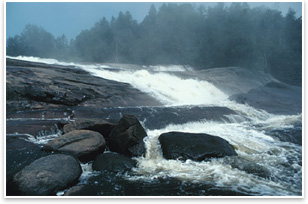
Biophilic Design Connects Humans with Nature by Tracy Ostroff Summary: Humans crave nature in the design of their buildings. So much so, says Yale professor Dr. Stephen R. Kellert, that “buildings deficient in facilitating the positive experience of nature hypothetically result in diminished human functioning, whereas facilities possessing biophilic features foster higher levels of human health and productivity.” These biophilic design features, Kellert notes, are the “direct, indirect, or symbolic occurrence in the built environment of the human affinity for nature.”
That means that for people to connect to buildings, natural elements must be present, whether actual—light, air, minerals, plants, animals, and other natural elements—or by representation in pictorial, elemental, or narrative form. The human’s connection to nature is rooted in evolutionary development, as these natural elements proved “instrumental in fostering fitness and survival.” For people to connect to buildings, natural elements must be present Kellert is the Tweedy Ordway Professor of Social Ecology and director of the Hixon Center for Urban Ecology and Program in Sustainable Development at Yale. He has been a driving force in the development of the joint program between the university’s school of environment and the architecture school.
“We labored in the wilderness in a minimalist way,” he says. “We must come to terms with our own being and not forget that fact we have a genetic affinity for natural form in process.” The human tendency to affiliate with nature is still very much a part of our emotional, intellectual, and physical development The human tendency to affiliate with nature, Kellert explains, is still very much a part of our emotional, intellectual, and physical development and fosters our capacity for problem solving and critical thinking. It becomes manifest in the built structures that we have around us, he says. And when that occurs, it tends to provide satisfaction and comfort and enhances performance, productivity, and comfort.
All architecture forms can coexist with biophilic design—even stark Modernism—if the Modernist tendencies are rooted in nature or are in some kind of complementary balance, Kellert notes. “There’s no formula that I know of, but my intuition tells me that two can live in some kind of compatible relationship.” Biophilic design is related to other disciplines like biomimicry, which, Kellert notes, looks more at how to integrate natural systems into design processes. |
||
Copyright 2007 The American Institute of Architects. All rights reserved. Home Page |
||
home
news headlines
practice
business
design
recent related
› Biophilia in Practice: Buildings that Connect People with Nature (COTEnotes)



